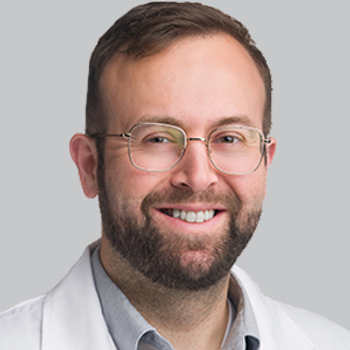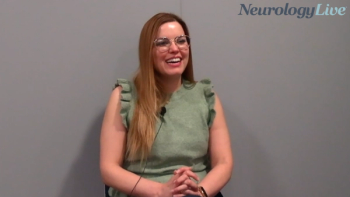
Clinical Trials for Cladribine in Multiple Sclerosis
Fred Lublin, MD: Let’s move on to cladribine. Cladribine is an older drug that’s a new drug. Wallace, why don’t you take us through cladribine?
Wallace Brownlee, MBChB, PhD, FRACP: Cladribine, as you say, is a medicine that has been around for a little while, and the previous formulation has been used in the treatment of hairy cell leukemia. It was studied in MS [multiple sclerosis] over a decade ago in 2 large phase 3 trials: the CLARITY study, which included patients who had relapsing/remitting multiple sclerosis and the ORACLE study, which took patients with CIS [clinically isolated syndrome]. Although many of them would be classified as MS with the updated diagnostic criteria that we’ve discussed. Cladribine is a prodrug. When it comes into the body, it is phosphorylated into the active metabolite, and the level of phosphorylation that occurs depends on the tissue type, so it is primarily taken up by lymphocytes where phosphorylation occurs and lymphocyte depletion occurs, possibly followed by an immune reconstitution effect. The immune system may be different after a course of cladribine. Of the available MS therapies, it is probably the most convenient in that it is given as short courses of treatment, with up to 20 days of oral treatment over 2 years. Generally, 5 days in months 1, 2, 13, and 14, and with those 20 days of treatment, what was seen in the CLARITY study was that patients can remain free of relapses and new MRI activity in the absence of ongoing therapy.
Fred Lublin, MD: How has that experience been using it?
Wallace Brownlee, MBChB, PhD, FRACP: We at the National Hospital for Neurology and Neurosurgery
have found this a very straightforward medication to use. Firstly, the medicine seems to be extremely well tolerated by patients. The main concern is lymphopenia. In the CLARITY study, the rates of grade 4 lymphopenia, this is a lymphocyte count below 200, were around 0.7%, so quite a rare event. Patients generally tolerate the course of treatment extremely well. Occasionally, patients will report problems with headache, tiredness, or sore throat during the treatment, but generally, it tends to produce very little in the way of adverse effects.
The other very attractive quality is the monitoring burden associated with it is very low. Compared with a number of other oral agents and monoclonal antibodies, there is very little monitoring required: just a couple of follow-up blood tests over the first 6 months of treatment, and then you need to ensure the lymphocyte count is above 800 to proceed with treatment in the second year.
Fred Lublin, MD: Sven?
Sven Meuth, MD, PhD: I have to say, when the drug was approved, there was some uncertainty in Germany because, first of all, the study was so long ago, and cladribine was tested as a platform or as a first-line therapy. In the CLARITY trial, over 70% of patients included were treatment naïve, and when it came to the market, it was all of a sudden approved for highly active patients. We all recognized the convenience of cladribine; however, it was difficult to get an idea about the real potential when it comes to efficacy. Now using it for more than 2 years, I can support Wallace’s opinion that it is very well tolerated, and I have to say the majority of patients are quite stable on this therapy. For me as an immunologist, it’s also very intriguing to have this concept of a pulse therapy so that you treat in years 1 and 2, and you have this treatment-free interval while the patients remain stable in years 3 and 4.
This is a bit of a different history compared to the United Kingdom, where this concept of pulse therapy was already introduced with alemtuzumab. And alemtuzumab was largely used in the United Kingdom, while in Germany, it was always a discussion, if you want to have a continuous treatment because you can interrupt this treatment and you can get rid of the treatment effects compared to pulse therapy, which is convenient. However, it is not so easy to stop therapy while you are on your way, and this is why cladribine was not introduced or it did not explode into the market. Now, numbers of patients are constantly increasing because the combination of efficacy and convenience for the patients is quite good.
Fred Lublin, MD: You bring up an interesting point about this drug, which is different than any other, and that was in the extension study, after 2 years on therapy, patients who were untreated did as well as those who went onto another course, suggesting a very long-acting effect over time. How do you figure out when to re-dose after the first 2 years?
Sven Meuth, MD, PhD: This is the discussion that we have right now because so far it’s only approved for 2 courses, and this is also comparable to the situation when alemtuzumab entered the market. There, we were all surprised. What do we do after 2 courses? If there is still relapse activity, are we then allowed to go for a third course, or do we necessarily have to switch therapy to a new drug? However, the patients we have had for the longest time on cladribine are now entering year 3, so we can still discuss this question 1 and a half years in addition, but then we have to come up with an idea about how to continue. My personal note on this is that, if the patient is stable in years 1 and 2 and remains stable in years 3 and 4, this is a full responder, in my opinion. In these cases, I would recommend to continue cladribine because obviously the mechanism of action is working in this particular patient.
However, if we have a situation that the patient is stable in years 1 and 2 but starts relapsing already in year 3, this might be an indication that this mechanism of action in this given patient is not working very well, and then we think we should maybe change to a monoclonal antibody. But right now there are no data available, there are only opinions that we can discuss.
Wallace Brownlee, MBChB, PhD, FRACP: I think that’s right, Sven, and there is a lot of uncertainty about what to do beyond year 4. I must say with our initial clinical experience in the United Kingdom, and I’d be interested to hear your experience from Germany, we found this a very effective medication. When we looked at the first 100 patients that we treated at the National Hospital for Neurology and Neurosurgery at Queen Square, we found that the overwhelming number, over 85%, were relapse-free in the first year of treatment. Our initial clinical impression supports the subgroup findings from the CLARITY study: this seems to be quite an effective medication, particularly in patients with high levels of disease activity.
Newsletter
Keep your finger on the pulse of neurology—subscribe to NeurologyLive for expert interviews, new data, and breakthrough treatment updates.



































